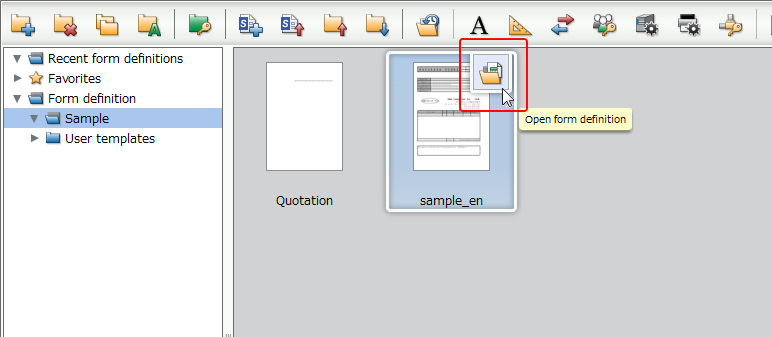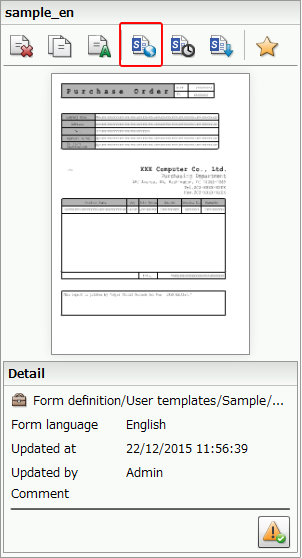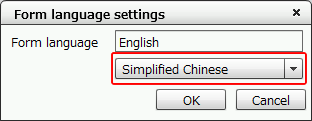3-5 Open a form definition
There are two ways to open an existing form definition.
One is to Open the form definition as it is and the other is to Open it with a different form language.
This section describes both of these ways to open a form definition.
Caution
When you open a form definition, if the same form definition is being edited by another user, you will see the message "This form definition is opened by another user. Continue? Autosave will be invalid."
If you click the Yes button, the autosave setting will be invalid in the form definition of the user who opened later.
If the administrator prohibits simultaneous editing of the form definition, the form definition being edited by another user can be opened, but cannot be saved with the same name.
Reference
If you open a form definition with the  icon placed in the upper left of the thumbnail in the form definition list or Detail panel, a message is displayed indicating that there is an error or warning in the form definition.
icon placed in the upper left of the thumbnail in the form definition list or Detail panel, a message is displayed indicating that there is an error or warning in the form definition.
You can also confirm the content of the message in the Error and Warning list window of Form Designer. (See "4-3-5 Check the list of errors and warnings in form definition").
Open a form definition
Click the
 Open form definition button that appears when you hover over a thumbnail in a form definition list.
Open form definition button that appears when you hover over a thumbnail in a form definition list.
Open a form definition with a different form language
Click the thumbnail in the form definition list. Then, click the
 Open form definition (Change form language) button in the Detail panel.
Open form definition (Change form language) button in the Detail panel.
In the Form language settings dialog, select the changed Form language from the drop-down list and click the OK button.
For details of the conversion process when changing the form language, see "Conversion process when changing the form language".

Conversion process when changing the form language
When opening a form definition with a different language, the form definition's XML form file is converted in accordance with the default values of SVF Cloud Designer. Then, the converted XML form file is loaded into SVF Cloud Designer.
In this case, the font list of the XML form file is converted to the font list set in SVF Cloud Designer.
The font settings for each item are converted based on font list replacements.
Caution
If an item's font setting changes, the size of its drawing area may change.
Calculation-formula, edit-formula, and attribute-formula contents are not converted.
Convert font settings
Font settings are converted as follows:
The process checks whether the specified font is in the font list or not.
If the same font exists in the font list of SVF Cloud Designer, it will be not converted.
If the same font does not exist, the process searches for a replacement font from the font list.
A proportional font can be converted to a similar proportional or fixed-width font. A fixed-width font can be converted to a similar fixed-width font.
The process first checks the font in the SVF Cloud Designer font list in the same index position as the target font and then checks the font list in descending order.
When the process finds a font that the original font can be converted to, it converts the original font to that font.
Caution
The font settings conversion process does not apply to items included in multi-item.
Some XML form files are in languages that use both half-width and full-width fonts. When those files are loaded to the SVF Cloud Designer in the language that uses only half-width fonts, if its half-width font option is set to None, the form file fonts are converted to the top-most font in the half-width font list of the SVF Cloud Designer.
In addition, the Field type value of field items is converted to Half-width.
Delete items
Some SVF Cloud Designer items are only available in particular languages. If you load an XML form file that includes an item not available in the language changed to, the item is deleted.
If the item is deleted, the following log message appears after the conversion:
Caution
The text frame is available only in Japanese and English (supported from SP5). Therefore, if an XML form file including text frames is loaded in a language other than Japanese and English, the text frames are deleted.